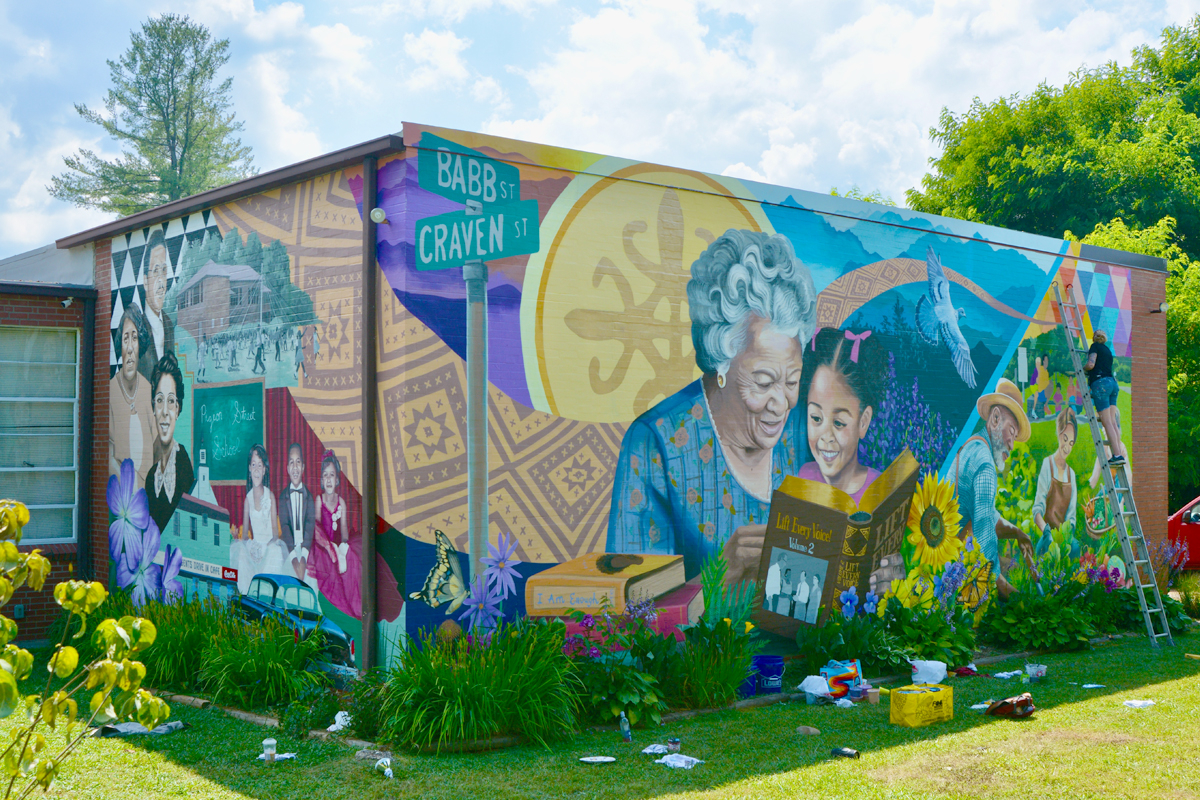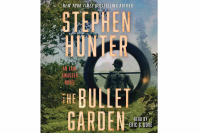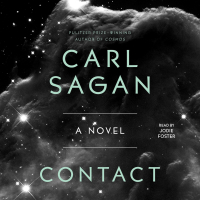Mural celebrates past, present and future of Pigeon Center
 Muralist Kristy McCarthy (far right) puts the finishing touches on her mural at the Pigeon Community Multicultural Development Center on June 28, 2024. Cory Vaillancourt photo
Muralist Kristy McCarthy (far right) puts the finishing touches on her mural at the Pigeon Community Multicultural Development Center on June 28, 2024. Cory Vaillancourt photo
A visually stunning amalgamation of images — both historic and aspirational — now adorns Waynesville’s Pigeon Community Multicultural Development center, breathing new life into an old neighborhood and commemorating the important role of the structure in regional Black history.
“I’ve been here 20-plus years. I also went to school in this building, so to me, the past, present and future is definitely realistic in my eyes,” said Lyn Forney, executive director of PCMDC. “As I come into this building, I always remember when it was the school and hear the voices of the teachers, I see my little classmates and all that stuff. To be able to see that for real, live in color, is amazing. It’s absolutely amazing.”
In 1957, the Pigeon Street School, located in Waynesville’s traditionally Black community, replaced the old Rosenwald School across Oakdale Street as Haywood County’s segregated school for Black children. When North Carolina Schools were desegregated in 1963, it became an instructional materials center until it was no longer needed. Soon, the Pigeon Community Development Club began to use it under the auspices of another Haywood nonprofit, REACH . The Pigeon Center became its own nonprofit in 2009 with some help from the Center for Participatory Change in Asheville and now provides summertime educational programs and afterschool care as well as holiday events and cultural offerings.
The mural came into being after a $15,000 grant from the Haywood County Tourism Development Authority and a $5,000 grant from the Haywood County Arts Council, along with small-dollar fundraising conducted over the course of a year.
A nationwide call for artists produced 16 applicants; ultimately, New York City-based muralist Kristy McCarthy was selected for the job.
But the mural isn’t painted directly on the ruddy brick walls of the Pigeon Center — McCarthy painted it in sections in her NYC studio on poly tab cloth, also known as parachute cloth, with the help of fellow muralist Michael Mitchell. Poly tab is a very strong non-woven fabric known for its durability and should last around 30 years, especially once it’s sealed to protect the vibrant colors from harmful UV rays.
Related Items
Installed and completed with the help of Western Carolina University interns Jerel Tavares and Miguel Antonio Perez, the mural spans two exterior faces of the building’s cafeteria and tells the story of the Pigeon Center through historic imagery connected with a Cherokee basket weave motif to acknowledge the history of the land where the Pigeon Center is located.
“They came up with a theme before I was even invited to come,” McCarthy said. “They really wanted to honor the history of the neighborhood and of this building and talk about the original Pigeon Street School that was in this building before it was the PCMDC. They wanted to talk about what the center offers today, what values they have and the future of this neighborhood and this center.”
McCarthy conducted some research on the area, then paid a visit and participated in a listening session with members of the community. She credited Assistant Town Manager Jesse Fowler and well-known local historian Alex McKay with helping her to source photos and develop the vision for the mural.
“It took a village to make this mural,” said McCarthy. “We did it all together. I’m really proud of it. I hope everybody else is proud of it and feels like it represents them.”
Nearly every aspect of the mural conveys meaning in both a visual and a symbolic sense.
Starting near the front door, the mural features images of three of the school’s teachers from the late 1950s beneath a rendering of a traditional Maypole dance, a featured recess activity for the school’s students. Beneath that, the spire of the nearby AME Zion church looms majestically over an old drive-in restaurant that used to be located across the street from the PCMDC. A 1952 DeSoto is parked out front.
Above it and backdropped by a red velvet curtain are three young students, one of them PCMDC board member Gregory Wheeler, all dressed up for a school play.
Rounding the corner to the front face of the building, the mural features street signs denoting Babb and Craven streets, the figurative crossroads of the community.
A stack of books rests near an old woman reading to a young girl, representing the passing on of knowledge, history and heritage to the next generation. Behind them, a gold medallion overlapping regional mountain vistas depicts PCMDC’s logo, a pair of conjoined Siamese crocodiles representing democracy and cooperation.
Near the edge of the mural, volunteers are shown harvesting from a community garden — cuisine is culture — while a group of children linger in the background, representing the future of the community.
“I think about the ‘past’ part of it and that this building represents so much more than just a school,” Forney said. “It represents a community. it represents a struggle. It represents overcoming lots of battles and issues. But ultimately, it represents a community coming together.”

















